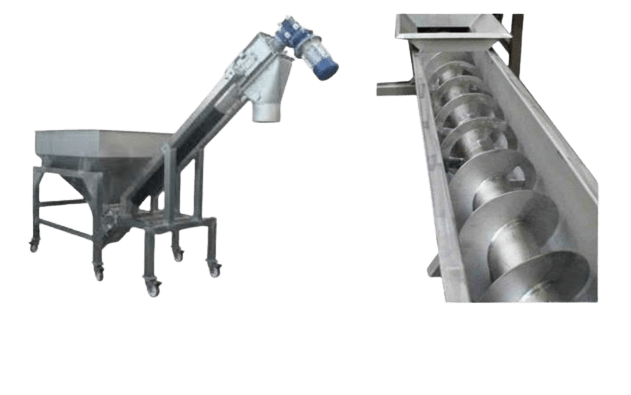Construction procurement is one of the most important phases in any project because it directly influences cost, quality, and delivery timelines. The procurement process determines how the client hires the contractor, designer, and suppliers to execute the work. Essentially, it’s about defining “who does what” and under what terms.
Choosing the right procurement method can make or break a project’s success. It affects how well different teams coordinate, how risks are distributed, and how efficiently the work proceeds. This article explains the major types of construction procurement methods, outlining their processes, advantages, and limitations so clients and project managers can make informed decisions.
Types of Construction Procurement
Let’s explore the major procurement methods commonly used in the construction industry. Each type offers unique benefits depending on the project’s scale, complexity, and client requirements.
1. Traditional Procurement (Design–Bid–Build)
This is the oldest and most widely used procurement approach. The process unfolds in three distinct stages:
Designing: The client first hires architects and engineers to create a detailed design and construction drawings.
Bidding: After the design is finalized, the client invites bids from multiple contractors. Each contractor provides a proposal based on the design specifications and cost estimates.
Building: The winning contractor executes the construction work according to the approved design.
Pros:
-
Roles and responsibilities are clearly defined, minimizing confusion.
-
Competitive bidding helps control project costs.
-
Quality can be maintained due to independent oversight between design and construction teams.
Cons:
-
The process is time-consuming, as construction cannot start until design completion.
-
Any design errors discovered during construction cause delays and cost overruns.
-
There is limited collaboration between the designer and the contractor.
This method works best for projects with well-defined requirements and fixed budgets, such as residential or small commercial developments.
2. Design and Build Procurement
In this model, a single entity handles both design and construction. The client signs one contract with a company that takes full responsibility for delivering the finished project.
Pros:
-
The process is faster because design and construction can overlap.
-
A single point of contact simplifies communication and accountability.
-
The integrated approach enhances coordination between design and construction teams.
Cons:
-
The contractor has control over both design and budget, which might lead to design compromises to cut costs.
-
Clients have less influence over detailed design decisions.
This method is ideal for clients seeking a simplified, turnkey solution — especially useful for fast-track projects, commercial buildings, or infrastructure works where time is a key factor.
3. Management Contracting
Here, the client hires a management contractor responsible for overseeing the entire project. This contractor does not perform the actual construction but manages several subcontractors who handle specific parts of the work (e.g., electrical, plumbing, or structural).
Pros:
-
Design and construction can proceed concurrently, reducing overall project duration.
-
Suitable for large and complex projects that require continuous design modifications.
-
Provides flexibility to introduce changes during construction.
Cons:
-
The total project cost is uncertain at the start because subcontractor prices are confirmed later.
-
Coordination among multiple subcontractors can become challenging if not well managed.
Management contracting is often used in industrial or high-value commercial projects, where the client values flexibility and expert supervision.
4. Construction Management
Construction management is similar to management contracting, but the client directly hires the subcontractors, not the main contractor. The construction manager only supervises and coordinates their work.
Pros:
-
The client maintains full control over procurement, quality, and cost.
-
Early start is possible since design and construction can overlap.
-
Changes can be implemented without complex contract adjustments.
Cons:
-
The client must stay actively involved in decision-making throughout the process.
-
It requires a technically knowledgeable client; otherwise, the process can be overwhelming.
This approach suits experienced clients or organizations with in-house technical teams — such as universities, developers, or large corporations handling multiple projects.
5. Partnering or Collaborative Procurement
This modern procurement model emphasizes teamwork and trust among all key participants — including clients, contractors, designers, and suppliers — from the project’s early stages.
Pros:
-
Encourages open communication and problem-solving.
-
Reduces disputes, delays, and rework.
-
Flexibility allows innovation and optimization during construction.
Cons:
-
Reaching agreement among multiple stakeholders can be difficult.
-
It may not suit projects with strict budgets or tight timelines.
Collaborative procurement is often used for complex infrastructure projects or sustainability-driven developments, where long-term cooperation is essential.
6. Public–Private Partnership (PPP)
A PPP is a long-term partnership between the public sector and private companies to finance, design, build, and sometimes operate major infrastructure projects such as highways, schools, or hospitals.
Pros:
-
Reduces the immediate financial burden on the government.
-
Leverages private-sector expertise and efficiency.
-
Encourages innovation through performance-based contracts.
Cons:
-
Financial and legal arrangements can be complex.
-
Poor planning can lead to cost escalations or long-term liabilities.
PPP arrangements are best suited for large-scale, public-interest projects where both funding and operational efficiency are critical.
Emerging Procurement Methods
In addition to the traditional six types, modern hybrid procurement models are gaining traction. For example:
-
Integrated Project Delivery (IPD): All key stakeholders share risks and rewards under a single contract. This approach promotes high collaboration and transparency.
-
E-Procurement: Digital tools and platforms are now being used to streamline bidding, document sharing, and communication — reducing paperwork and improving efficiency.
These new methods reflect how technology and collaboration are reshaping the construction industry.
How to Choose the Right Procurement Method
The right procurement method depends on several factors:
-
Project size and complexity
-
Budget flexibility
-
Timeline and urgency
-
Client’s technical expertise
-
Level of desired control and risk sharing
Clients often consult a Construction Estimating Company to analyze which method offers the best value for their specific project. These experts evaluate labor, materials, risk, and time costs for each approach and help clients make data-driven decisions.
Conclusion
Understanding different construction procurement methods is essential for achieving successful project outcomes. Each approach — whether traditional, design-build, or collaborative — carries distinct advantages and challenges. Selecting the right one ensures that the project runs smoothly, stays on budget, and meets quality expectations.
For clients uncertain about which path to choose, partnering with a professional construction cost estimating service can make all the difference. They help align procurement strategy with cost efficiency, risk management, and project goals, ensuring every decision adds measurable value.




Leave a Reply